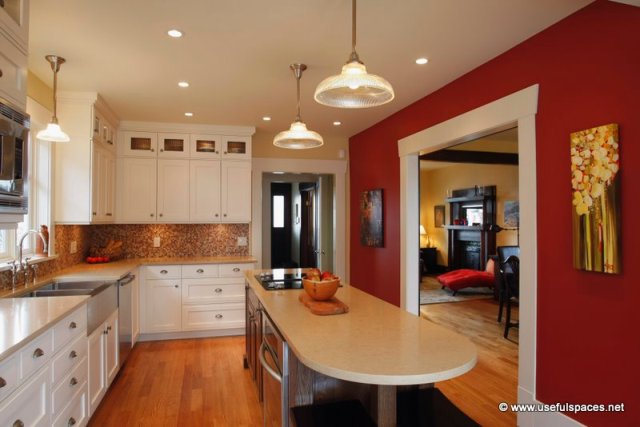 Approx 3 weeks ago, I got an interesting question via Twitter from a gentlemen named Arne Salvesen CKD (Certified Kitchen Designer) – would you mind if I did a rebuttal piece on your RIP to the recessed light article? Nick @Cupboards said you would be game… Well besides the initial thought of “with friends like these” (just kidding Nick), how could I say no?
Approx 3 weeks ago, I got an interesting question via Twitter from a gentlemen named Arne Salvesen CKD (Certified Kitchen Designer) – would you mind if I did a rebuttal piece on your RIP to the recessed light article? Nick @Cupboards said you would be game… Well besides the initial thought of “with friends like these” (just kidding Nick), how could I say no?
While Arne did provide me the whole article in advance to use, I thought it best to just use a teaser piece from it, and simply point to his full article and comments. While you are there, you might want to look around, as not only does he do some good work (based on the picture), he has also written some great articles. Now as for a rebuttal of his rebuttal, well I am pretty sure one will be forth coming – who knows, maybe a lighting designer would also like to chime in…
Not Dead Yet! Saving the Pot Light
Last month I came across an article on The HTRC (Homeowners & Trades Resource Center) announcing the death of the “Can-Light”; what I would refer to as a pot light. Sean uses a comment written by Michael Anschel of Verified-Green & Otogawa-Anschel Design as the foundation for his argument, and while Sean (and Michael) makes several excellent points, I feel he falls victim to what I call the “sky-is-falling” syndrome. We all want to “do the right thing” when it comes to going Green and being Earth-friendly. But acting without having a better place to go is foolhardy and can lead to poor decisions.
I’ll address each point as it came up in the article, and see if there is some discussion to be had.
1. Down lighting makes people look bad. Go stand under a can light and have someone take a photo of you. Looks like you have not slept in a week. Yuck.
Down lighting is awful, true. But this only applies when you’re dealing with proximity lighting, like at a vanity mirror. The idea behind using pot lights is to spread the light out over the entire room to provide a wash of generic or ambient light. Unless you’re using pin lights (the wrong bulb for the situation) the light beam will be wide enough to avoid the “ghoul” effect. The sun’s light comes from above, and last I checked I look pretty good at the beach.But let’s put that aside, and address how we would eliminate down lighting altogether.
If lighting can’t come from above, it needs to come from the side or be some sort of indirect lighting; those are the only options remaining. In most kitchens, the walls are covered in cabinetry for the most part, so wall sconces are out. Using pendant lighting is a also possibility, but pendants are typically used for feature lighting. A kitchen illuminated exclusively with pendant would look something like the kitchen on the left, and nobody wants that!
